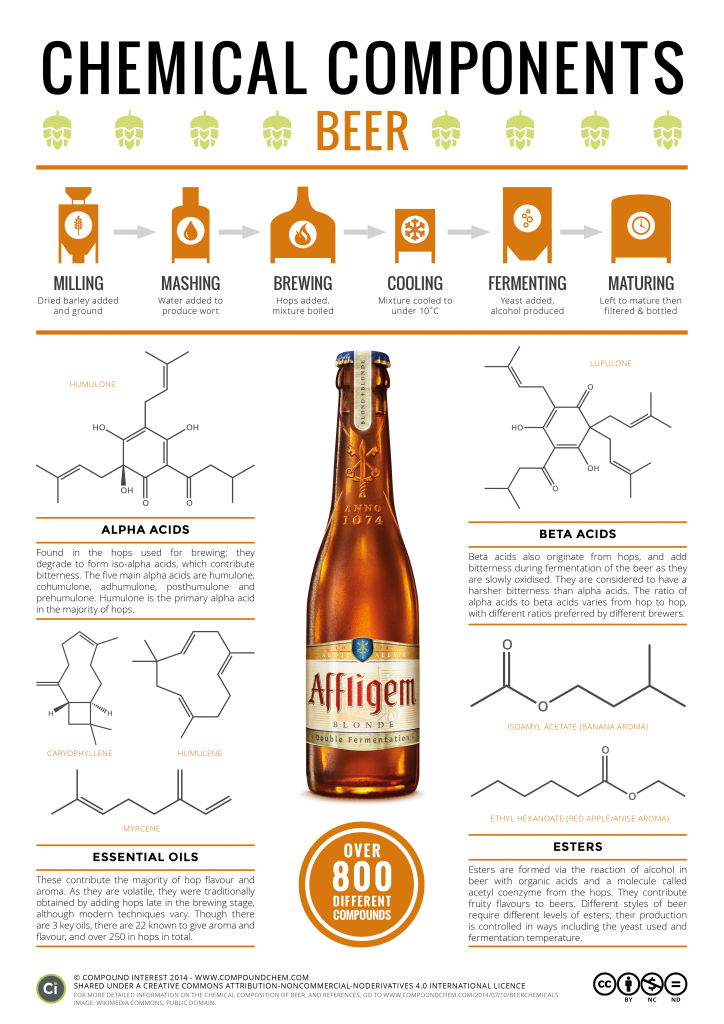In honor of Saint Patrick’s Day, Reactions delves into the chemistry of craft beer and explains what happens within the brewing process that makes craft beer different from the larger commercial brands.
It’s been around for centuries but it seems like beer has never been more popular. Microbreweries are cranking out special stouts, IPAs, lagers and pilsners. And the flavors and aromas of each of those brews all come down to chemistry. …[CORRECTION: The beta acid structure at 1:18 and 1:32 is a beta version of Cleve’s acid. We should have shown the structure of lupulone or another beta acid found in beer. We regret the error — many thanks to Andy at Compound Interest for catching that.
Compound Interest has also created an informative graphic that plots the chemical composition of beer and what makes beer taste bitter.
image via Compound Interest







